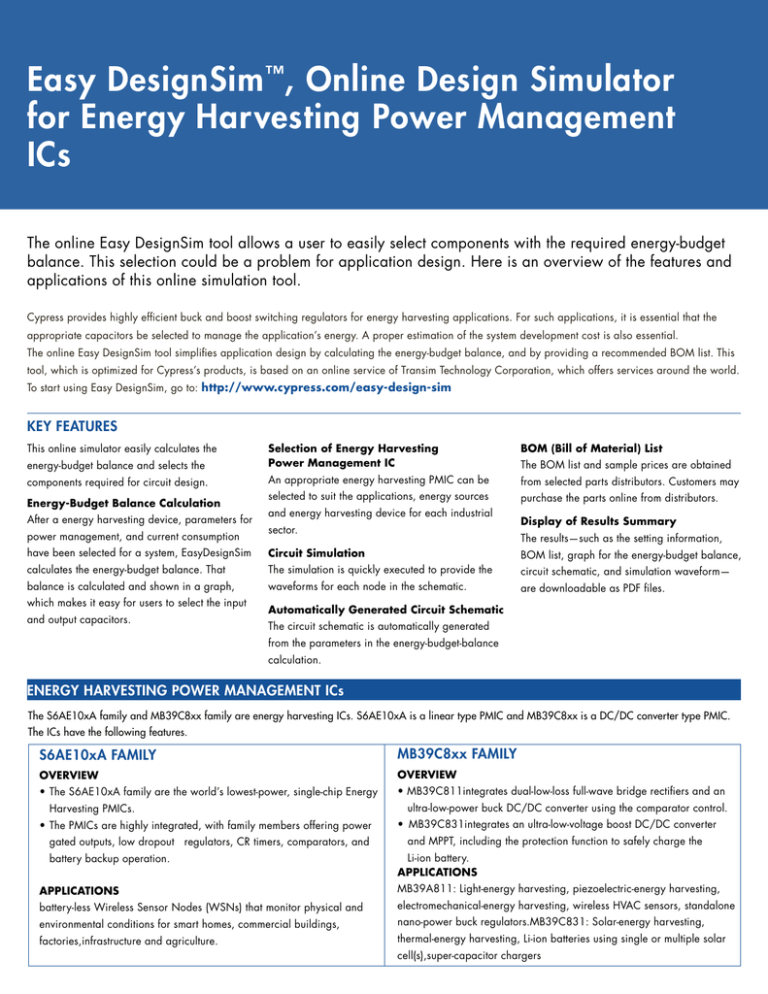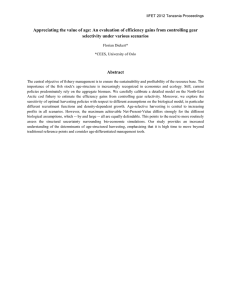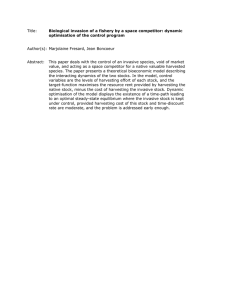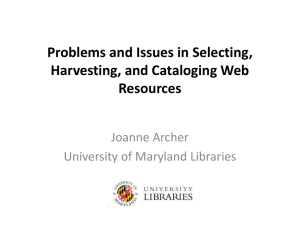
Easy DesignSim ™, Online Design Simulator
for Energy Harvesting Power Management
ICs
The online Easy DesignSim tool allows a user to easily select components with the required energy-budget
balance. This selection could be a problem for application design. Here is an overview of the features and
applications of this online simulation tool.
Cypress provides highly efficient buck and boost switching regulators for energy harvesting applications. For such applications, it is essential that the
appropriate capacitors be selected to manage the application’s energy. A proper estimation of the system development cost is also essential.
The online Easy DesignSim tool simplifies application design by calculating the energy-budget balance, and by providing a recommended BOM list. This
tool, which is optimized for Cypress’s products, is based on an online service of Transim Technology Corporation, which offers services around the world.
To start using Easy DesignSim, go to: http://www.cypress.com/easy-design-sim
KEY FEATURES
Selection of Energy Harvesting
Power Management IC
BOM (Bill of Material) List
energy-budget balance and selects the
components required for circuit design.
An appropriate energy harvesting PMIC can be
from selected parts distributors. Customers may
selected to suit the applications, energy sources
purchase the parts online from distributors.
This online simulator easily calculates the
Energy-Budget Balance Calculation
After a energy harvesting device, parameters for
power management, and current consumption
and energy harvesting device for each industrial
sector.
The BOM list and sample prices are obtained
Display of Results Summary
The results—such as the setting information,
have been selected for a system, EasyDesignSim
Circuit Simulation
BOM list, graph for the energy-budget balance,
calculates the energy-budget balance. That
The simulation is quickly executed to provide the
circuit schematic, and simulation waveform—
balance is calculated and shown in a graph,
waveforms for each node in the schematic.
are downloadable as PDF files.
which makes it easy for users to select the input
and output capacitors.
Automatically Generated Circuit Schematic
The circuit schematic is automatically generated
from the parameters in the energy-budget-balance
calculation.
ENERGY HARVESTING POWER MANAGEMENT ICs
The S6AE10xA family and MB39C8xx family are energy harvesting ICs. S6AE10xA is a linear type PMIC and MB39C8xx is a DC/DC converter type PMIC.
The ICs have the following features.
S6AE10xA FAMILY
MB39C8xx FAMILY
OVERVIEW
OVERVIEW
•The S6AE10xA family are the world’s lowest-power, single-chip Energy
• MB39C811integrates dual-low-loss full-wave bridge rectifiers and an
Harvesting PMICs.
•The PMICs are highly integrated, with family members offering power
gated outputs, low dropout regulators, CR timers, comparators, and
battery backup operation.
ultra-low-power buck DC/DC converter using the comparator control.
• MB39C831integrates an ultra-low-voltage boost DC/DC converter
and MPPT, including the protection function to safely charge the
Li-ion battery.
APPLICATIONS
APPLICATIONS
MB39A811: Light-energy harvesting, piezoelectric-energy harvesting,
battery-less Wireless Sensor Nodes (WSNs) that monitor physical and
electromechanical-energy harvesting, wireless HVAC sensors, standalone
environmental conditions for smart homes, commercial buildings,
nano-power buck regulators.MB39C831: Solar-energy harvesting,
factories,infrastructure and agriculture.
thermal-energy harvesting, Li-ion batteries using single or multiple solar
cell(s),super-capacitor chargers
PRODUCT FEATURES
ITEM / PRODUCT
S6AE101A
S6AE102A
S6AE103A
MB39C811
MB39C831
POWER
CONVERTER
TYPE
Linear
Linear
Linear
Buck DC/DC converter
Boost DC/DC converter
QUIESCENT
CURRENT
250 nA
280 nA
280 nA
550nA (VIN = 2.5 V)
1.5 µA (VIN = 4.5 V)
1.9 µA (VIN = 18 V)
32uA
INPUT
VOLTAGE
2.0 V-5.5 V
2.0 V-5.5 V
2.0 V-5.5 V
2.6 V – 23.0 V
0.3 V-4.75 V
OUTPUT
VOLTAGE
1.1 - 5.2 (V)
1.1 - 5.2 (V)
1.1 - 5.2 (V)
1.5, 1.8, 2.5, 3.3,
3.6, 4.1, 4.5, 5.0 (V)
3.0, 3.3, 3.6, 4.1, 4.5,
5.0 (V)
FUNCTION
Power gating switch 1ch
Power gating switch
2ch, LDO 2ch(Quiesent
current 400nA), Hybrid
storage control circuit
Power gating switch
2ch, LDO 2ch(Quiesent
current 400nA), Hybrid
storage control circuit,
CR Timer, Comparator
Dual-low-loss full-wave
bridge rectifier
MPPT (Maximum Power
Point Tracking)
PACKAGE
10-pin SON (3 x 3 mm)
20-pin QFN (4 x 4 mm)
24-pin QFN (4 x 4 mm)
40-pin QFN (6 x 6 mm)
40-pin QFN (6 x 6 mm)
USING EASY DESIGNSIM
The following explains the features and use of Easy DesignSim The process consists of the seven steps shown in Figure 1.
Figure 1: Easy DesignSim Usage Flow
1
2
Login &
Registration
Product
Selection
3
Energy Budget
Calculation &
Parameter
Setup
4
Energy Budget
Result Graph
Display
5
Simulation
& Circuit
Schematic
Generation
6
7
BOM List
Buy-in part
Summary &
PDF Download
SELECT THE PMIC FOR ENERGY HARVESTING
SYSTEM ENERGY BUDGET CALCULATION
Either the buck converter (S6AE10xA, MB39C811) or the boost
converter (MB39C831) can be selected by the energy harvesting device,
or selected for each application and energy source (Figure 2). Click the
product part number and move to the next step.
To develop an energy harvesting system, the storing energy needs to
be considered because the energy harvesting device energy supply is
low and unstable. The size of the input and output capacitors should be
calculated for the energy requirements of the system. This complicated
calculation is implemented in Easy DesignSim. After a energy harvesting
device parameters for power management, and current consumption
have been selected for a system, Easy DesignSim calculates the energybudget balance. The result is shown in a graph. (Refer to Figures 3, 4,
5, 6, 7, 8, and 9.)To set the parameters of the IC and select the input
and output capacitors, click the i - Help/Usage tutorial button and the
“help” window will appear.
Figure 2: Part selection page
Figure 3: Energy flow in a system
Cloud
Environmental
Energy
(solar, vibration,
thermal, RF)
Environmental
Information
Gateway
Wireless Network Sensor Module
Data Flow
Energy Harvesting
Device
Energy Flow
Piezoelectric
Peltier
Electromagnetic
Solar Cell
Capacitor
Energy Flow
Sensor
Capacitor
MCU
PMIC
RF
Memory
Energy Harvesting
Device Block
Part selection
Industrial sector, Application, Energy source, Harvester
Power Management Block
System Control Block
Harvester : Energy harvesting device
Figure 4: Breakdown of current consumption in a system
Figure 8: Results of energy-budget balance in a system
Energy Harvesting
Power Mangement Block
Device Block
System Control Block
Figure 5: Setup for current consumption in a system
step numbers the of current consumption in a system
Lists of steps
Show graph button
numbers of repeats in the graph
Return step during repeats
Figure 6: Setup for energy harvesting device (e.g., a solar cell)
Results and evaluation
of energy budget
Circuit schematic
generation button
Figure 9: Graph of an energy-budget balance in a system
Selection of energy harvesting device
Preset
Output
Voltage
System
Min
Voltage
Figure 7: Setup for a power management block
Selection of preset output voltage
Input system (minimum voltage)
This graph shows the output voltage of the PMIC and the system’s
minimum voltage. When the output voltage is above the system’s
minimum voltage, enough energy has been stored on the input and
output capacitors.
Note: Cypress has verified these simulation results, based on actual measurements. However,
operation of the device based on this simulation tool is not guaranteed. Circuit designers are
advised to confirm operation with the actual applications.
CHECK-CIRCUIT OPERATION
The circuit schematic is automatically generated based on the
parameters in the energy-budget-balance calculation (Figure 10). The
simulation is executed quickly, and provides the waveforms for each
node in the schematic. The parameters in the schematic are changeable.
Figure 10: MB39C811 circuit-schematic generation
The BOM list and the sample prices are obtained, and access to the
distributors provided. This estimates the BOM cost quickly and easily
(Figure 12).
Figure 12: BOM List
Selection of the parts distributor
FUTURE DEVELOPMENT
BOM cost
To supply energy to a system (e.g., a battery-less wireless sensor node),
energy harvesting power management ICs need to effectively collect
various kinds of environmental energy.
Cypress will focus on developing more efficient, energy harvesting
power management ICs with lower power consumption and lower startup energy requirements. The company will also continue to upgrade its
online simulation tools.
You can start to use the Easy DesignSim from the Cypress homepage.
The circuit schematic is automatically generated based on the
parameters in the energy-budget calculation. The parameters are
changeable.
Figure 11: MB39C811 simulation waveform
Homepage => Products => Energy Harvesting PMICs => Easy DesignSim
http://www.cypress.com/easy-design-sim
Cypress Semiconductor Corporation
198 Champion Court, San Jose CA 95134
phone +1 408.943.2600 fax +1 408.943.6848
toll free +1 800.858.1810 (U.S. only) Press “1” to reach your local sales
representative
© 2014-2016 Cypress Semiconductor Corporation. All rights reserved. All other trademarks are
the property of their respective owners.
Doc# 002- 09061 Rev*A





